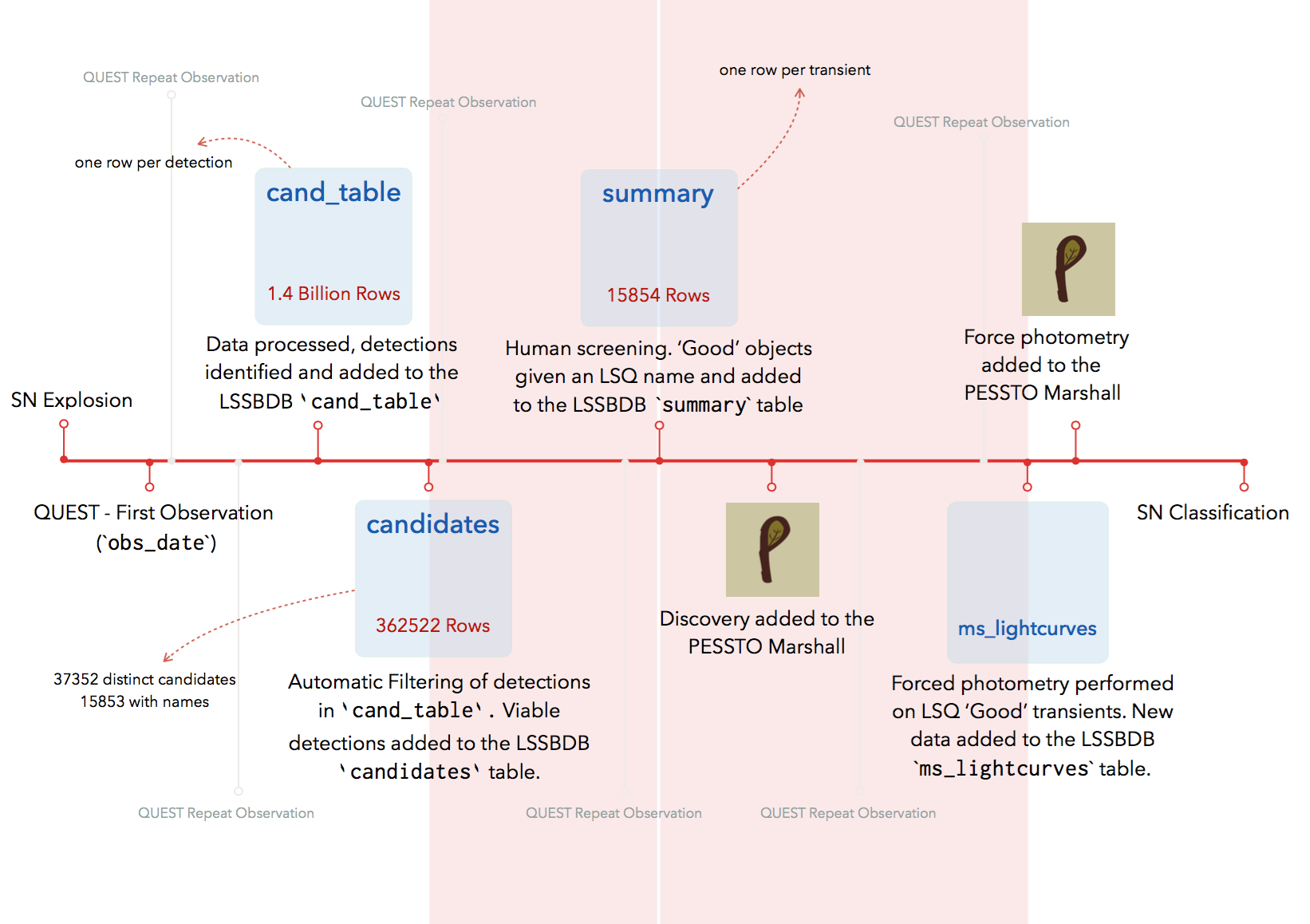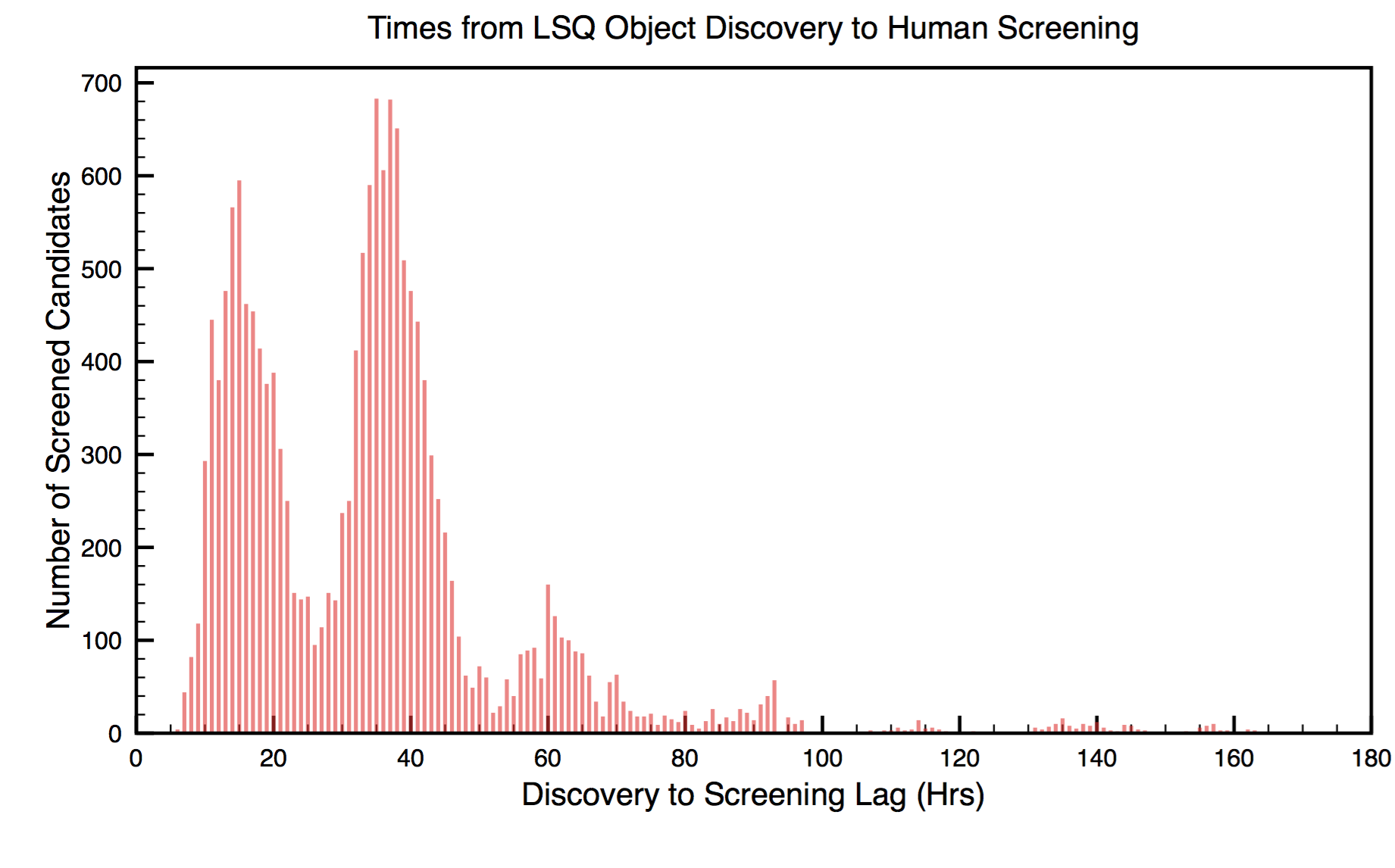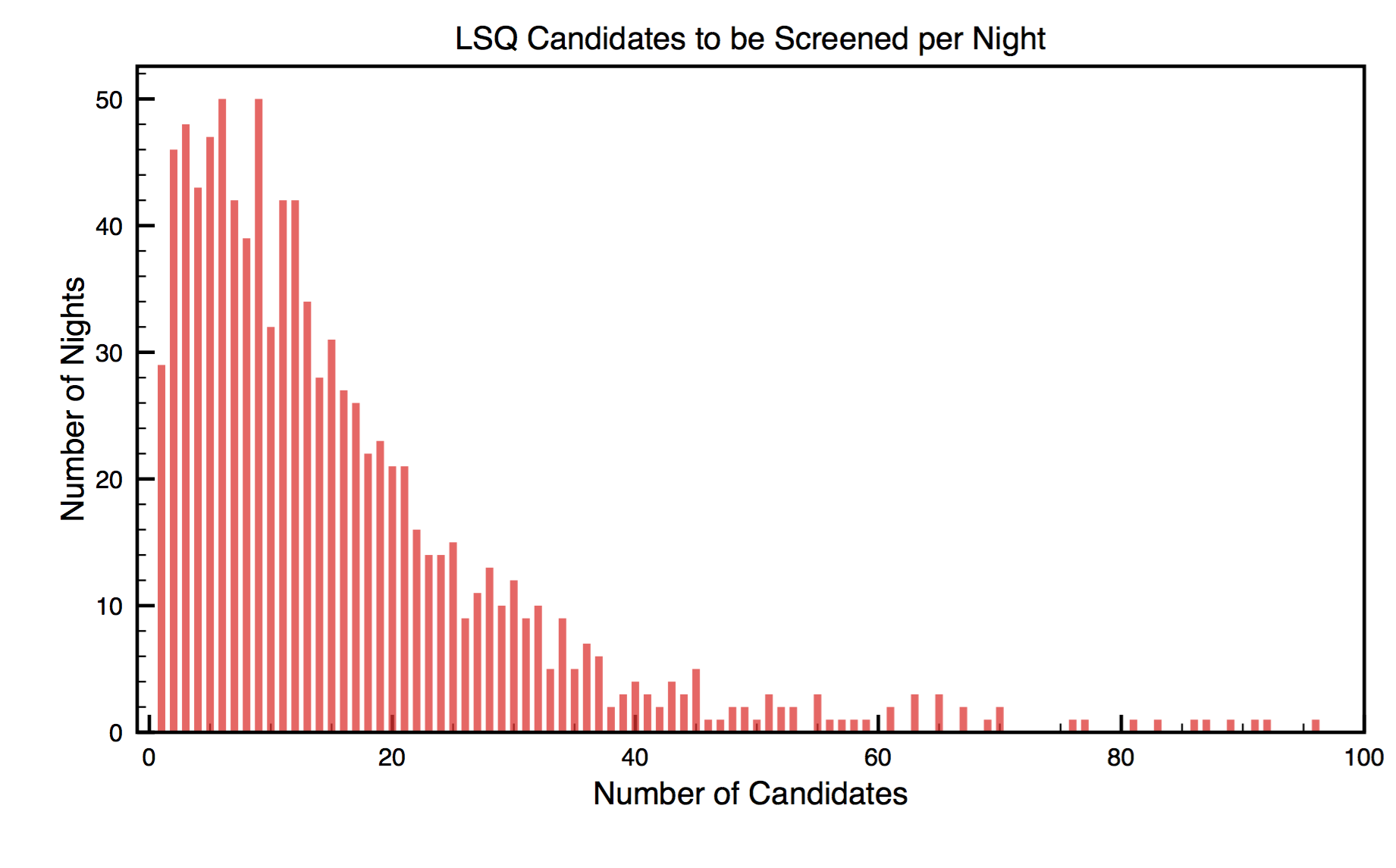The Problem
We need to minimise time between a SN explosion and the PESSTO classification of the SN. We’ve minimised delays on the PESSTO side of the timeline (the easy bit!), but we need to help LSQ reduced their time delays if possible.
Timeline from Explosion to Classification

The 2 time blocks highlighted in pink are:
- Lag time between viable detections being added to the LSSNDB
candidatestable and human screening of those objects to find the ‘good’ LSQ targets. - Lag time between a ‘good’ target being screened, forced photometry being performed on the target and data added to the LSSNDB
ms_lightcurvestable.
Components of Problem
1. Lag between LSQ ‘Discovery’ and Human Screening
I’ve done some digging around in the data to try and quantify this lag time. In the plot below I define ‘discovery’ as the earilest JD in the LSSNDB candidates table for a given object. The screening date comes from the screening_date in the LSSNDB summary table (translated to UT).

If this plot is correct, then you can see that 30% of the discovered objects are screened within the first 24 hrs, and the remaining 70% within around 3 days.
We are guessing the 2 bottlenecks here are:
- Processing the data at NERSC, and
- Eyeballing all of the potential candidates
I also tried to work out how many candidates you typically have to eyeball from a single night’s observing, but I think I’ve probably got this wrong. This is data taken from the candidates table - so these are probably the good targets you select from some larger list of potential candidates?

2. Lag between Human Target Selection and Forced Photometry
From my estimates below you seem to be doing pretty well at getting the forced photometry done quickly after a taret is screened as a ‘good’ target. Our efforts are therefore probably best placed at trying to reduces the discovery to screening lag rather than here.

Some questions for the LSQ guys -
- Is the data streamed to NERSC for processing throughout the La Silla night, or is it a bulk dump at the end of the night?
- How many candidates do you typically have to screen from a single night’s data?
- Can PESSTO help with the screening of candidates to reduce the load on you guys and speed up the eyeballing process?
- How CPU intensive is the forced photometry? Would it be impossible to perform the force photometry on all LSQ candidates BEFORE they pass human screening? This should help find good targets sooner.